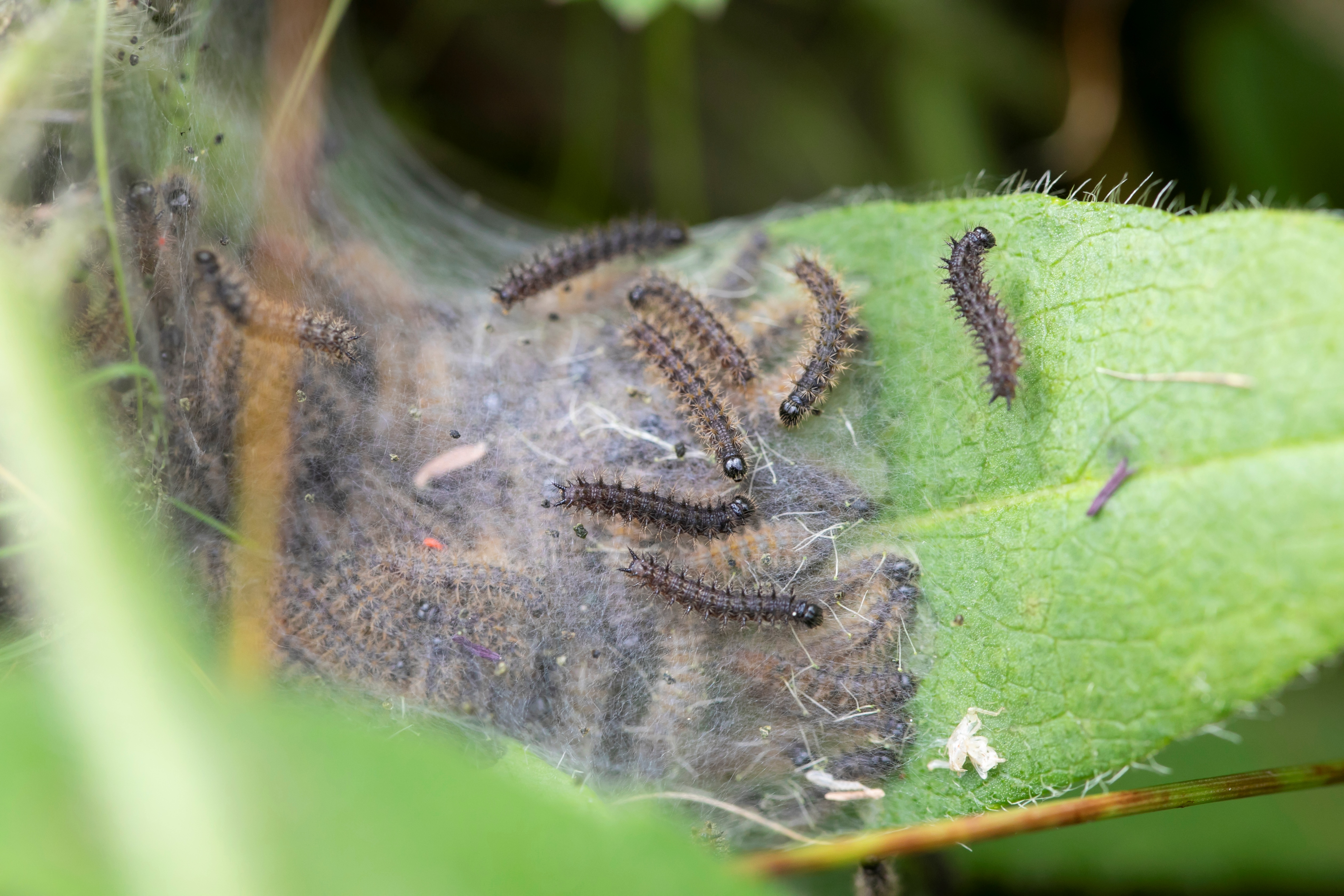Butterfly Conservation has reported a record number of caterpillar webs have been found during an annual survey at Lankham Bottom in West Dorset.
The survey involved counting silken webs or ‘nests’ created by the caterpillars of one of the UK’s most threatened butterflies, the Marsh Fritillary.
This year, the survey team counted over 500 nests, the highest number ever recorded on this site. The highest number previously recorded was in 2007 when 132 webs were spotted.
Cath Shellswell, Dorset and Wiltshire Landscape Officer at Butterfly Conservation said: “The Marsh Fritillary is one of the few butterflies that it is possible for us to count during the caterpillar stage thanks to the conspicuous silken webs they create over their food plant. The webs, which the developing caterpillars live in communally, help provide protection from the weather and predators, and by counting them, we can improve our understanding of how the population is faring.”
The Marsh Fritillary was once widespread in Britain and Ireland but has declined by more than 46% since the 1970s and is now considered vulnerable to extinction on the Red List of British Butterflies. However, the chalk grassland at Lankham Bottom reserve, which is leased to Butterfly Conservation by Wessex Water, has proven a stronghold for this rare species.
Dr Caroline Bulman, Head of Ecology at Butterfly Conservation said: “We know numbers of the Marsh Fritillary can fluctuate hugely each year, but this is a significant increase that we haven’t seen this year at other survey sites in Dorset.
“Although we don’t yet know what this will mean for the number of adult butterflies next year, we will continue to carefully manage and monitor the site, and we’re hopeful this is good news for the population here.”
The surveys are carried out in mid to late August before the caterpillars retreat into denser grass to hibernate. When the caterpillars emerge again in spring, they can occasionally be spotted sunbathing as they use the heat to help digest their food.
The brightly patterned orange and brown adult butterflies can be seen flying between May and June and are usually found in damp or chalk grasslands where they lay large batches of eggs on their food plant, Devil’s-bit Scabious.
You can find out more on Lankham Bottom and visiting the reserve here.


